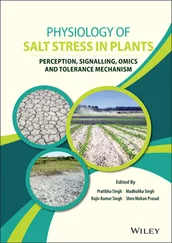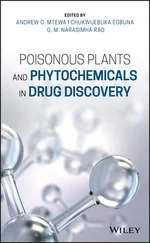The terpenoids constitute the largest class of natural products, and many interesting products are extensively applied in the industrial sector as flavors, fragrances, and spices and are also used in perfumery and cosmetics. Many terpenoids have biological activities and are also used for medical purposes. In higher plants, the conventional acetate–mevalonic acid pathway operates mainly in the cytosol and mitochondria and synthesizes sterols, sesquiterpenes, and ubiquinones mainly. In the plastid, the non-mevalonic acid pathway takes place and synthesizes hemi-, mono-, sesqui-, and diterpenes along with carotenoids and phytol tail of chlorophyll. The monoterpenes are widely distributed natural products found in herbs, spices, citrus, conifers, and most flowers and fruits. These are C10, short chain compounds, normally found in combination with sesquiterpenes, that play many significant roles, viz. antimicrobial, insect repellant, and pollinator attractants (Davis 2010). Iridoids are characterized by skeletons – in which a six-membered ring, containing an oxygen atom, is combined to an iridane skeleton – and are found in plants combined with sugar as glycosides. The iridoids are classified as iridoid glycosides (aucubin, harpagoside), nonglycosylated iridoids (loganin), secoiridoids (gentiopicroside), and bisiridoids, developed by dimerization of iridoids and secoiridoids (Ludwiczuk et al. 2017). Sesquiterpenes (C15) are less volatile than monoterpenes but have more potential for stereochemical diversities and odors and possess anti-inflammatory and antimicrobial properties (Buckle, 2015). The seed maintenance and bud dormancy are regulated by abscisic acid (sesquiterpene), and it also responded positively to water stress by modifying the properties of cell membrane (Berli et al. 2010). Triterpenoids are widely distributed in plants often accumulated in their glycosylated form. Saponins comprise hydrophobic triterpenoid aglycones called sapogenin and one or more hydrophilic sugar moieties. The triterpenoids possess antimicrobial and anti-inflammatory activities (Vincken et al. 2007).
The phenolic compounds are aromatic benzene ring molecules synthesized by plants mainly as protection against biotic and abiotic stresses (Robles-Sanchez et al. 2009; Velderrain-Rodríguez et al. 2014). These compounds provide structural integrity and scaffolding support to plants. The plant phytoalexins released from wounded sites help in repelling or killing many microbes (Bhattacharya et al. 2010). The phenolic compounds are widely occurred in the plant kingdom, especially contributing color, flavor, and astringency to flowers and fruits. The accumulation of phenolic compounds may vary from 0.3 to 5.0 g/100 g dry weight of a plant material. These compounds are considered to be by-products of the metabolism of the aromatic amino acid phenylalanine (Swanson 2003). The phenolic compounds are synthesized in plants by two biosynthetic pathways, viz. shikimic acid and pentose phosphate, through phenylpropanoid (Randhir et al. 2004). The glucose moves to pentose phosphate pathway by converting glucose-6-phosphate irreversibly to ribulose-5-phosphate. The reaction catalyzed by glucose-6-phosphate dehydrogenase. In the second pathway, erythrose-4-phosphate along with phosphoenolpyruvate is used for the phenylpropanoid pathway to synthesize phenolic molecules after being channeled to the shikimic acid pathway to produce phenylalanine (Vattem et al. 2005; Lin et al. 2010, 2016). Some coumarins and their derivatives have significant antifungal activity against several soilborne fungi and demonstrate higher stability than original coumarin compounds. Furanocoumarins are found in Umbelliferae members known for their use in the treatment of fungal diseases in plants (Brooker et al. 2008; Ali et al. 2008). The flavonoids are chemically polyphenolic in nature and occur in fruits, flowers, and vegetables (Burak and Imen 1999) and have miscellaneous favorable antioxidative effects associated with various diseases such as cancer, Alzheimer's disease, atherosclerosis, etc. (Castañeda-Ovando et al. 2009). They are also associated with a broad spectrum of health-promoting effects and are indispensable constituents in various nutraceutical, pharmaceutical, medicinal, and cosmetic products (Lee et al. 2009).
The quinones are a group of compounds occur in several plant species and are synthesized via the shikimate or polyketide pathways (Scott Obach and Kalgutkar 2010). The benzoquinones, naphthoquinones, and anthraquinones are found in higher plant species. Till today, nearly 600 quinones have been identified from various plant families, viz. Rubiaceae (Harborne 1982). These compounds are cyclic α,β-diketones, which can be converted by reduction into hydroquinones (Morrison and Boyd 1973). The oxidized form of conjugated quinones are colorful (yellow color) like p -benzoquinone, while reduced forms are colorless. By fusing the second aromatic ring with benzoquinone, the naphthaquinones are formed. Similarly, if both sides of benzoquinone fused with aromatic ring, then the formed molecule is called as anthraquinone. The many quinones are biosynthesized by acetate–malonate pathways, some from shikimic acid pathways, while few are generated by oxidative modification of secondary metabolites from a variety of other pathways (Seigler 1998).
The nitrogen-containing natural products include alkaloids, cyanogenic glucosides, and amino acids. The alkaloids are generally bicyclic, tricyclic, or tetracyclic derivatives of the molecule quinolizidine. The alkaloids are biosynthesized by amino acids (lysine, tyrosine, and tryptophan) and approximately found in 20% plant species of the plant kingdom (Glencross 2016). More than 12 000 alkaloids have been identified from 150 families of plants; alkaloids generally exist as salts of organic acids like acetic acid, malic acid, lactic acid, citric acid, oxalic acid, tartaric acid, tannic acid, and other acids. Some alkaloids are weak and basic in nature while few occur in glycosidic forms as solanine, piperine, and atropine. The alkaloids are used as pharmaceuticals, narcotics, and stimulants (morphine, quinine, codeine, etc.), and their lower doses are pharmacologically significant, while their higher doses may be toxic such as strychnine, nicotine, etc. (Richard et al. 2013). The alkaloids are very complex in their structure; they can be classified on the basis of set of parameters including features of their structure and pathways of biogenesis. They can be grouped as follows (Hussain et al. 2018): pyridine group (piperine, coniine, trigonelline, arecoline, arecaidine, guvacine, cytisine, lobeline, nicotine, anabasine, sparteine, pelletierine), pyrrolidine group (hygrine, cuscohygrine, nicotine), tropane group (atropine, cocaine, ecgonine, scopolamine, catuabine), indolizidine group (senecionine, swainsonine), quinoline group (quinine, quinidine, dihydroquinine, dihydroquinidine, strychnine, brucine, veratrine, cevadine), isoquinoline group (papaverine, narcotine, narceine, pancratistatin, sanguinarine, hydrastine, berberine, emetine, berbamine, oxyacanthine), phenanthrene alkaloids (morphine, codeine, thebaine, oripavine), phenethylamine group (mescaline, ephedrine, dopamine), indole group (serotonin, bufotenine, psilocybin, ergine, ergotamine, lysergic acid), β-carbolines (harmine, harmaline, tetrahydroharmine), yohimbans (reserpine, yohimbine), vinca alkaloids (vinblastine, vincristine), kratom alkaloids (mitragynine, 7-hydroxymitragynine), tabernanthe iboga (ibogaine, voacangine, coronaridine), strychnos nux-vomica (strychnine, brucine), purine group (xanthines, caffeine, theobromine, theophylline), terpenoid group (aconitine, solanidine, solanine, chaconine), and veratrum alkaloids (veratramine, cyclopamine, cycloposine, jervine, muldamine). The secondary metabolites are biosynthesized by three main pathways in plants – the shikimate pathway, the isoprenoid pathway, and the polyketide pathway. The shikimic acid pathway is the major pathway for synthesis of aromatic compounds. This pathway occurs in plants, normally manipulated for targeting the affectivity of antibiotics and herbicides, because this pathway does not occur in animals. The biological reaction of conversion of chorismate into the aromatic amino acids in plants catalyzed by chorismate mutase and anthranilate synthase enzymes. The phenylpropanoid pathway is followed by 20% of plants; the chorismate mutase is a key enzyme that regulates the whole reactions. The important compounds as lignans, alkaloids, flavonoids, and anthocyanins are synthesized by this pathway. The phenylalanine converts to trans -cinnamic acid by a non-oxidative deamination and the biochemical reaction catalyzed by phenylalanine ammonia lyase. The isoprenoid pathway is known for synthesis of terpenoids (Behenna et al. 2008; Brooker et al. 2008; da Rocha 2013).
Читать дальше












